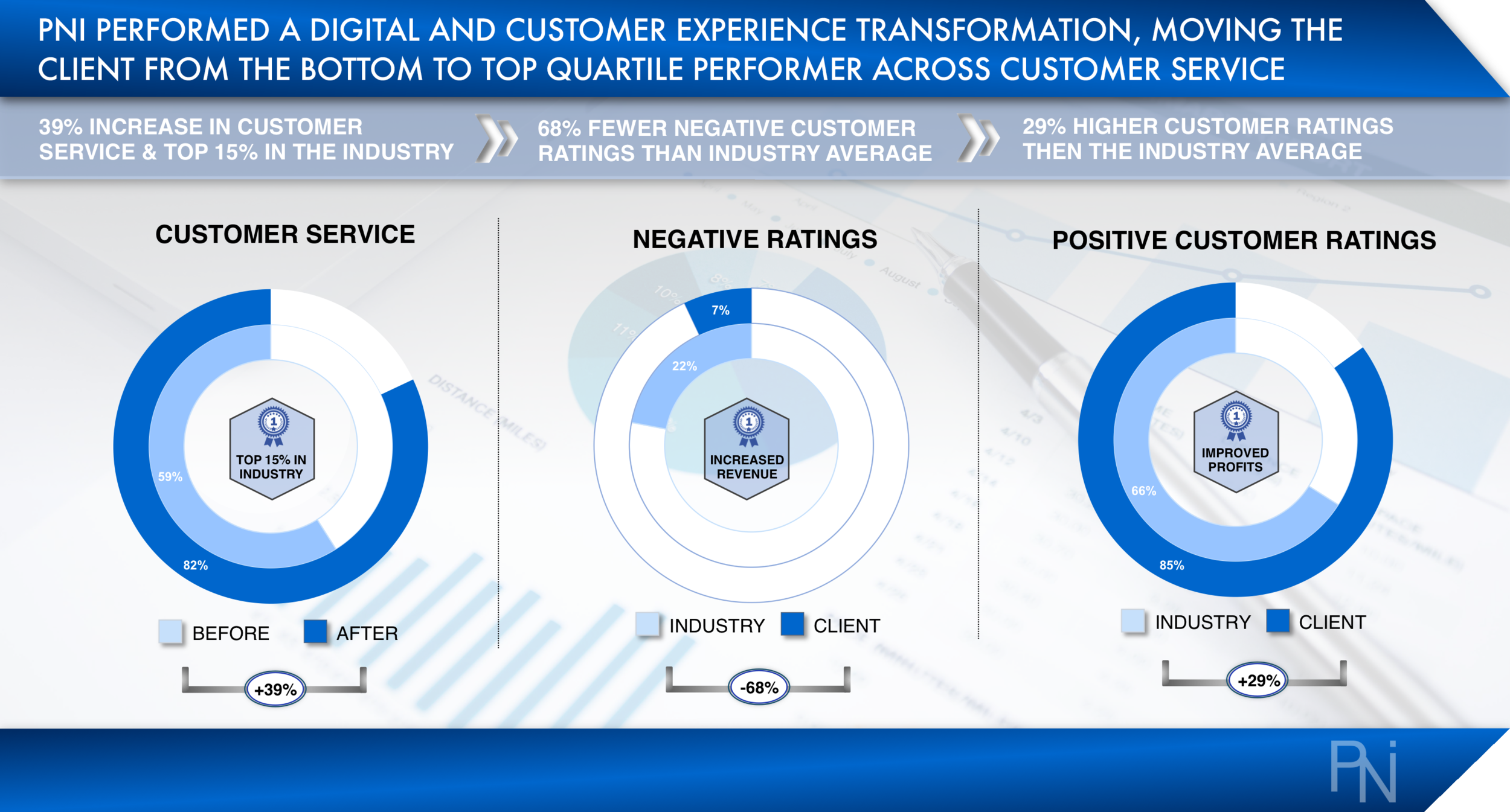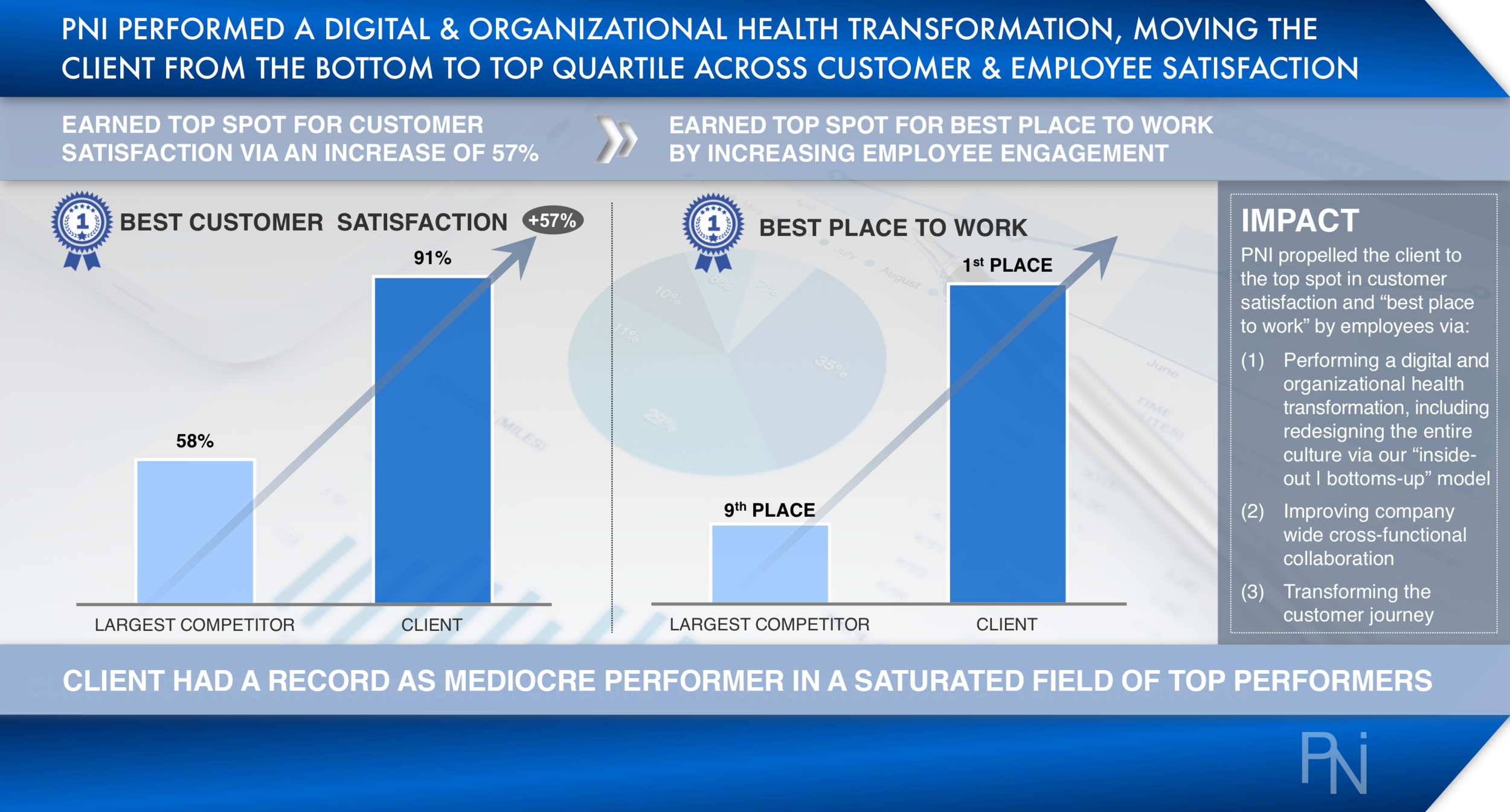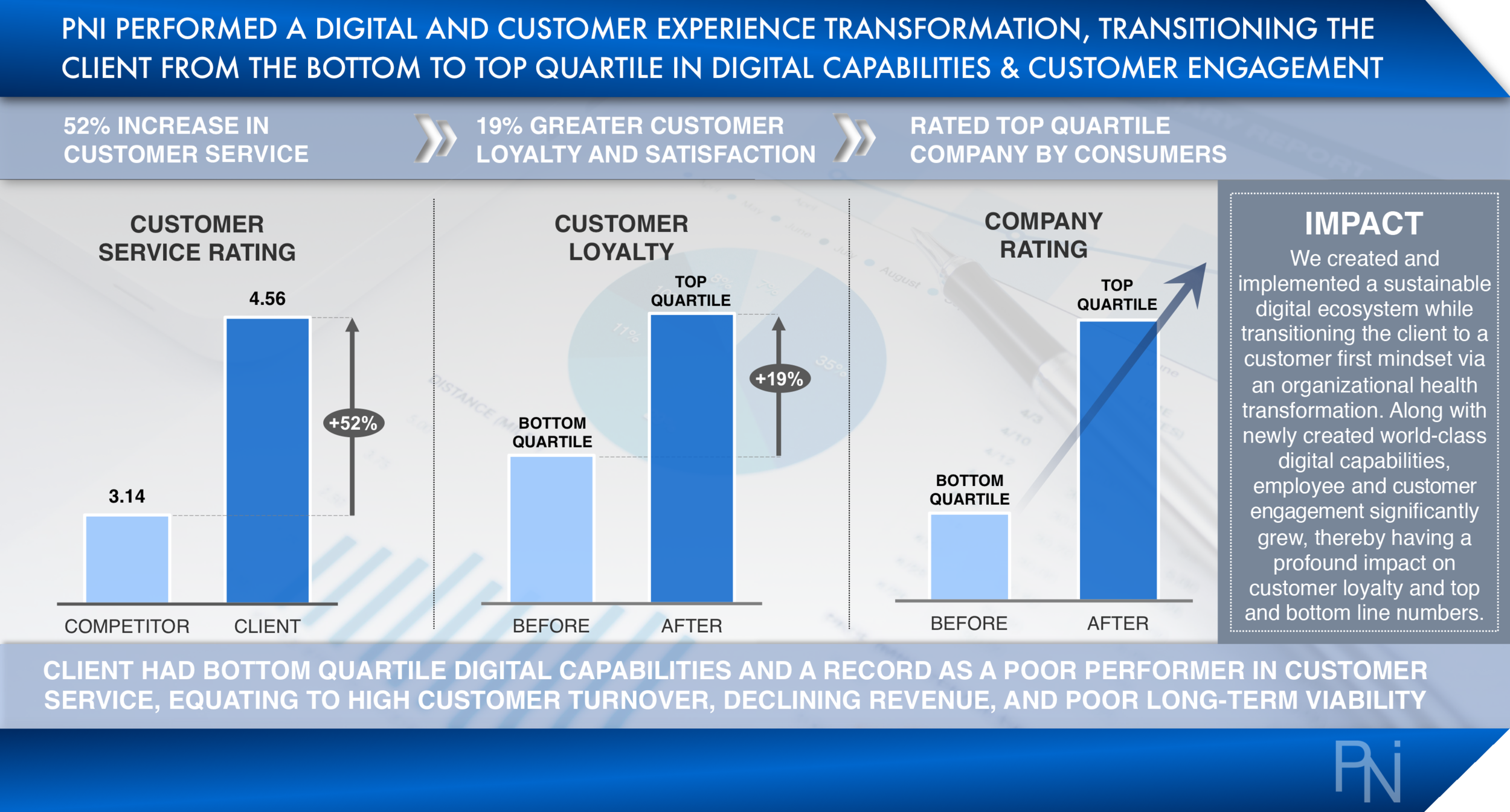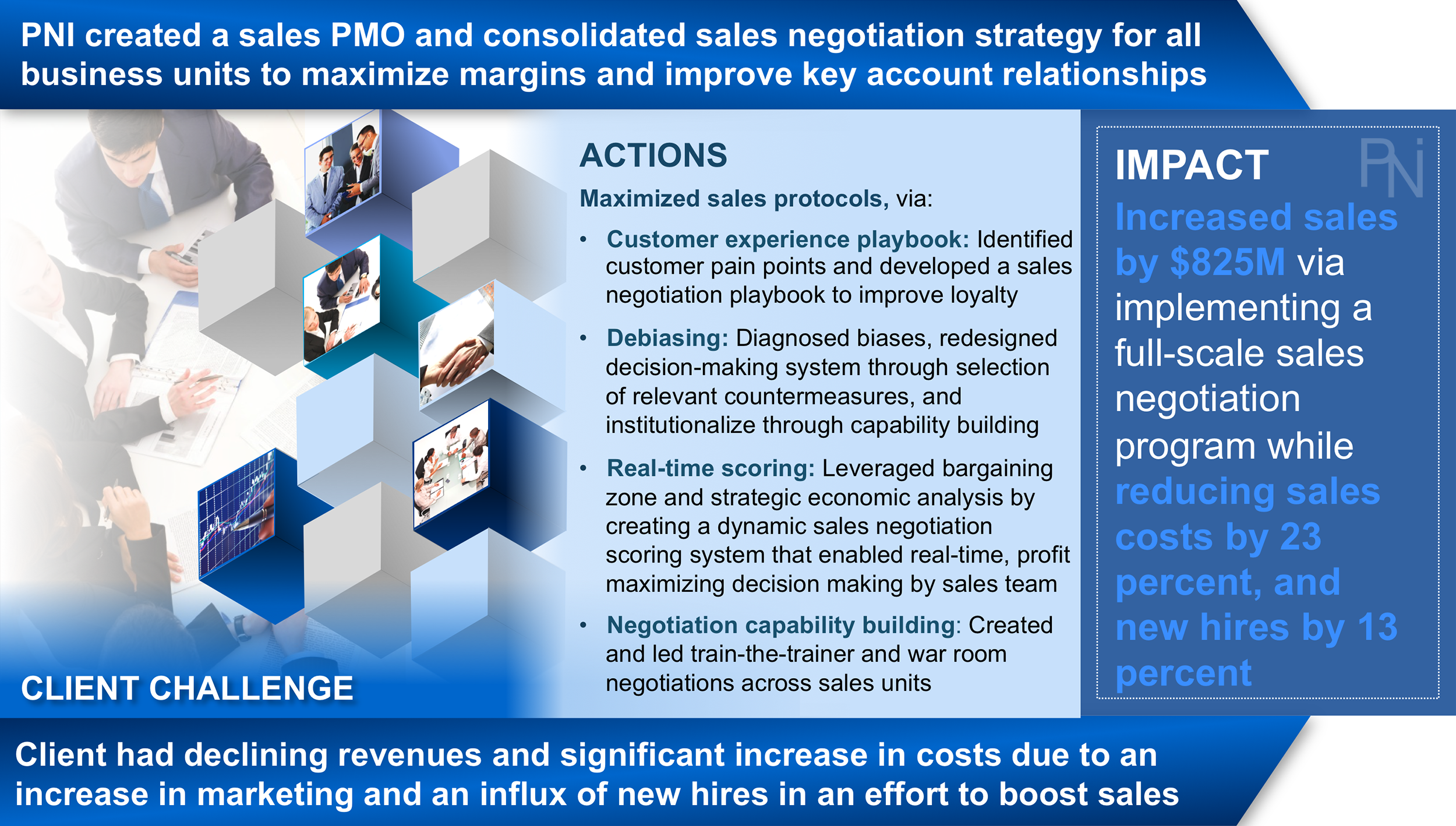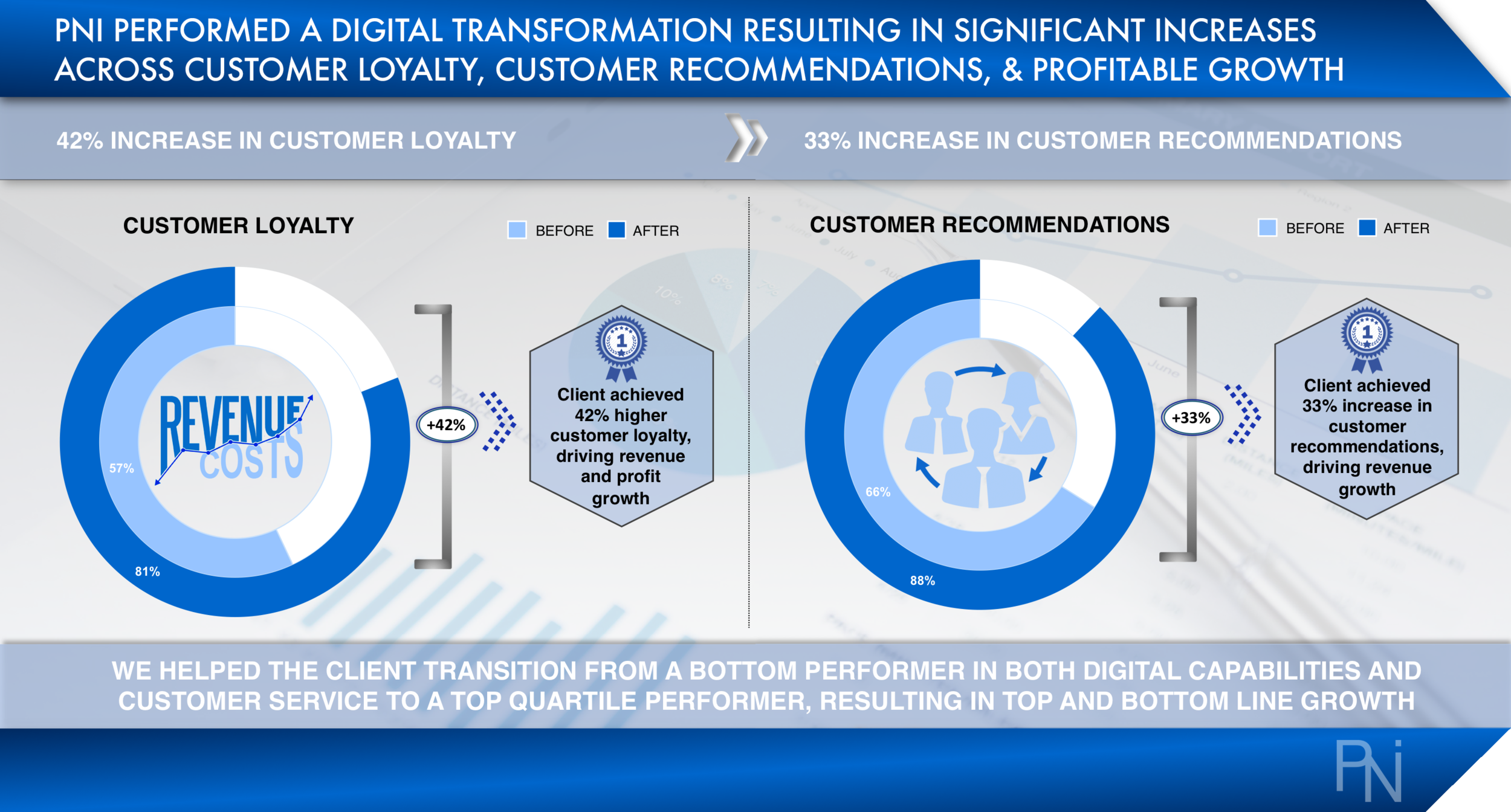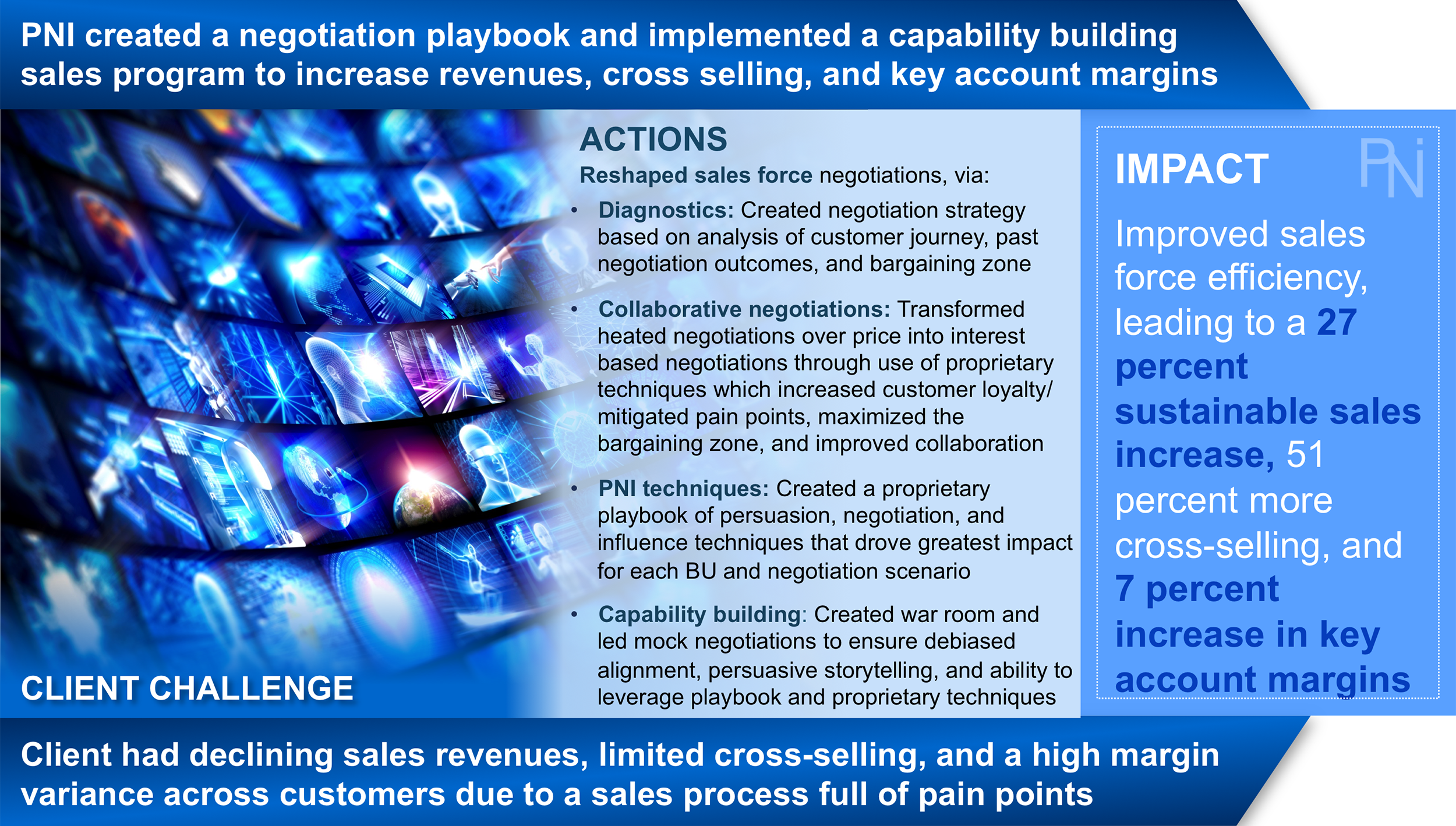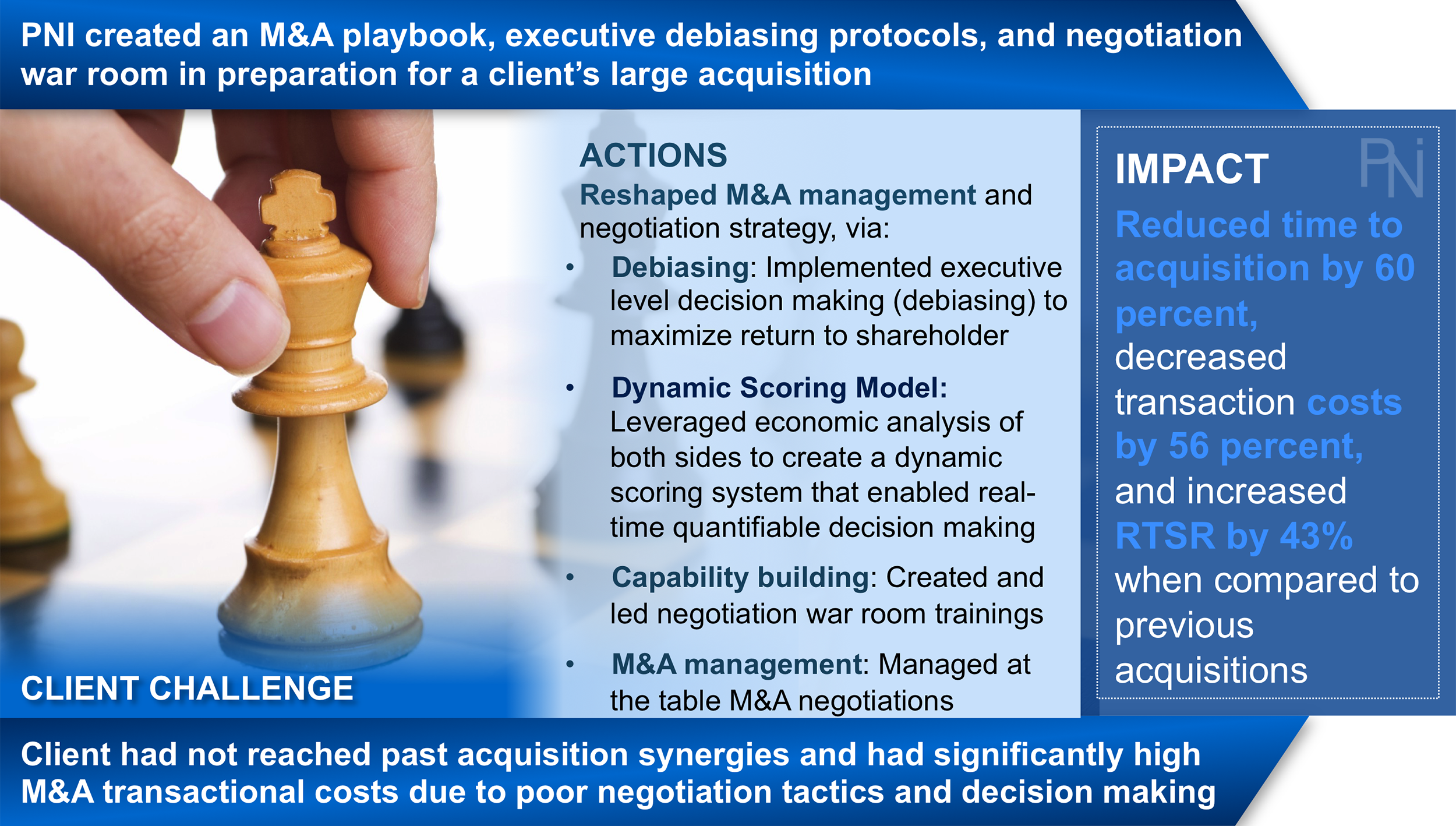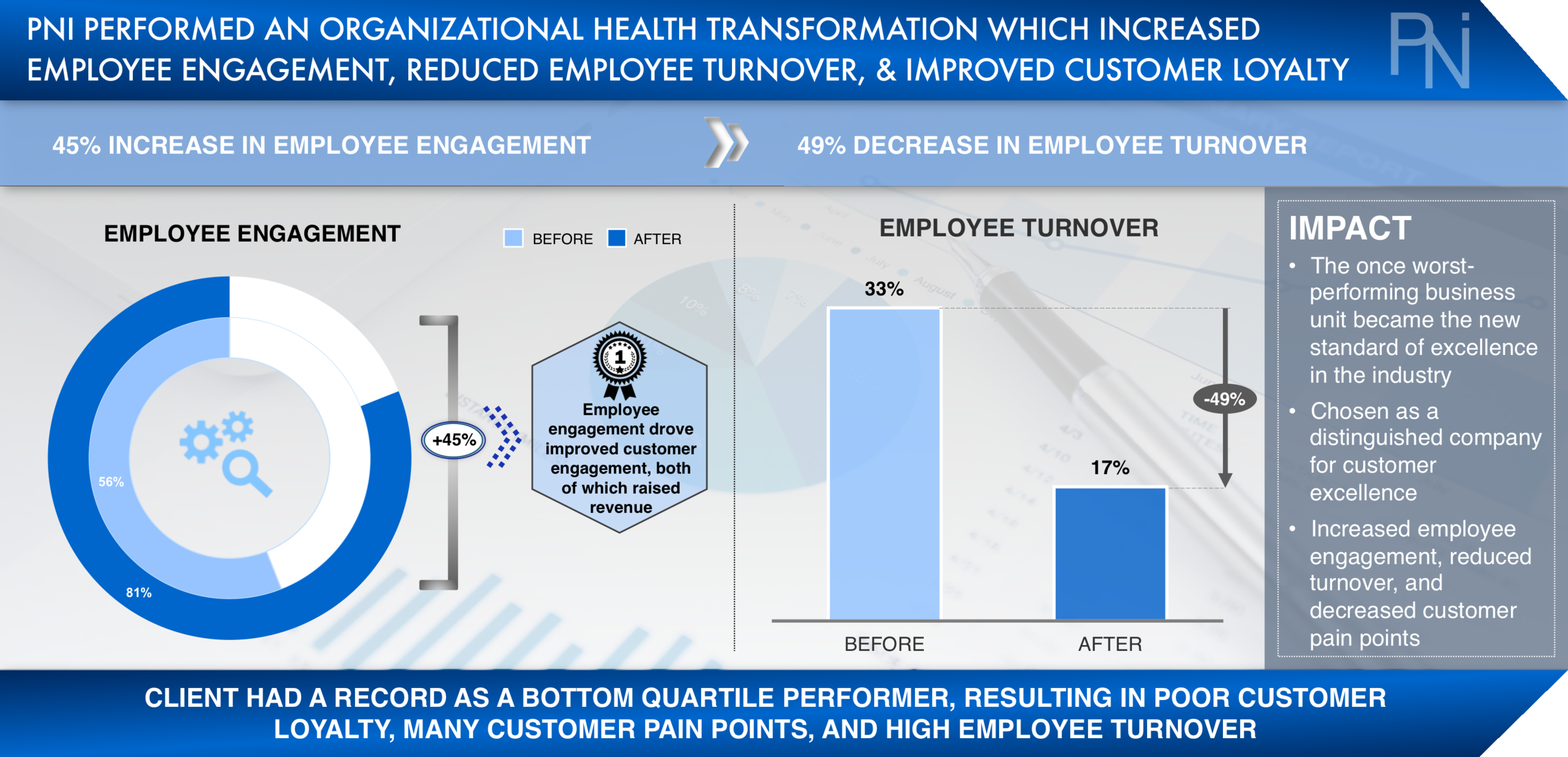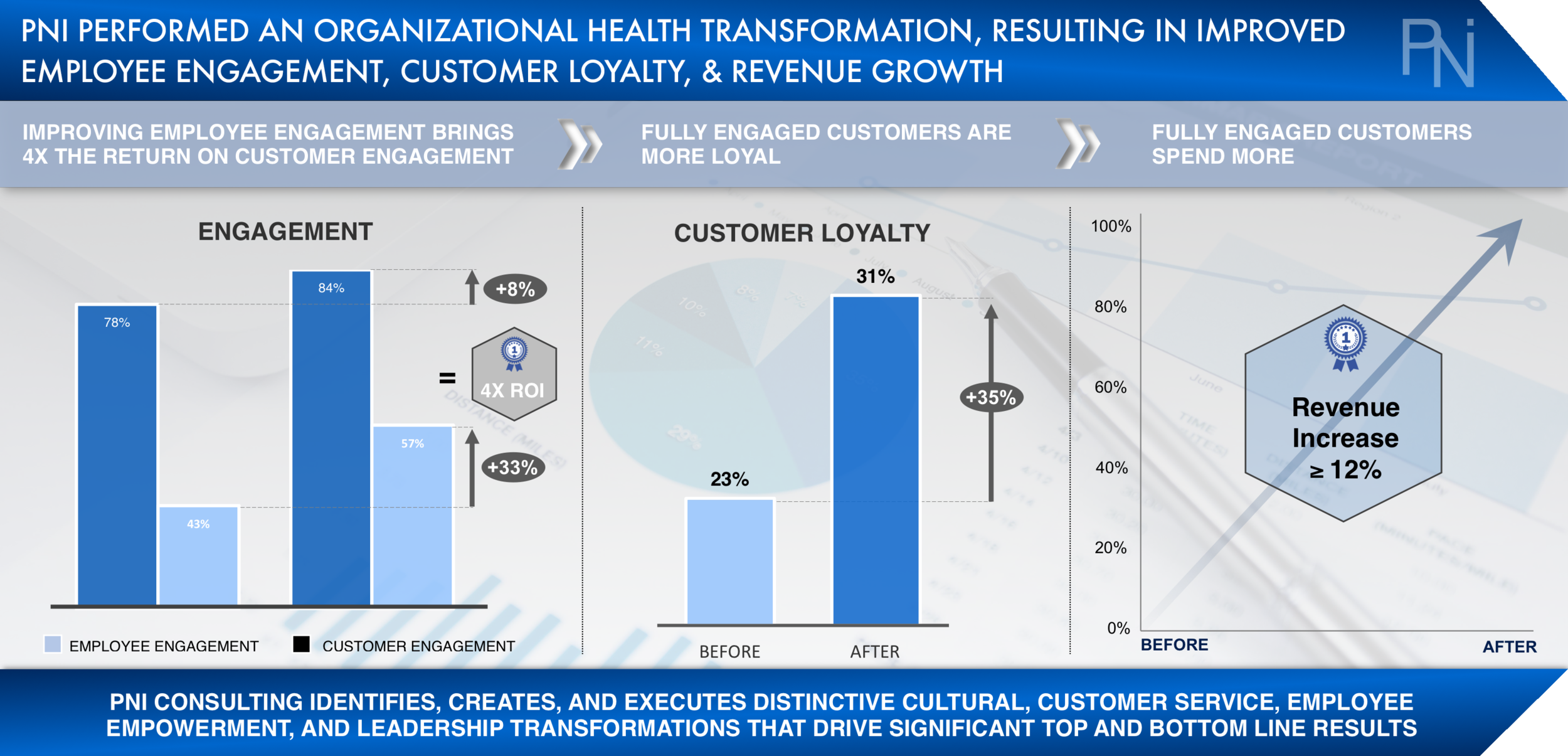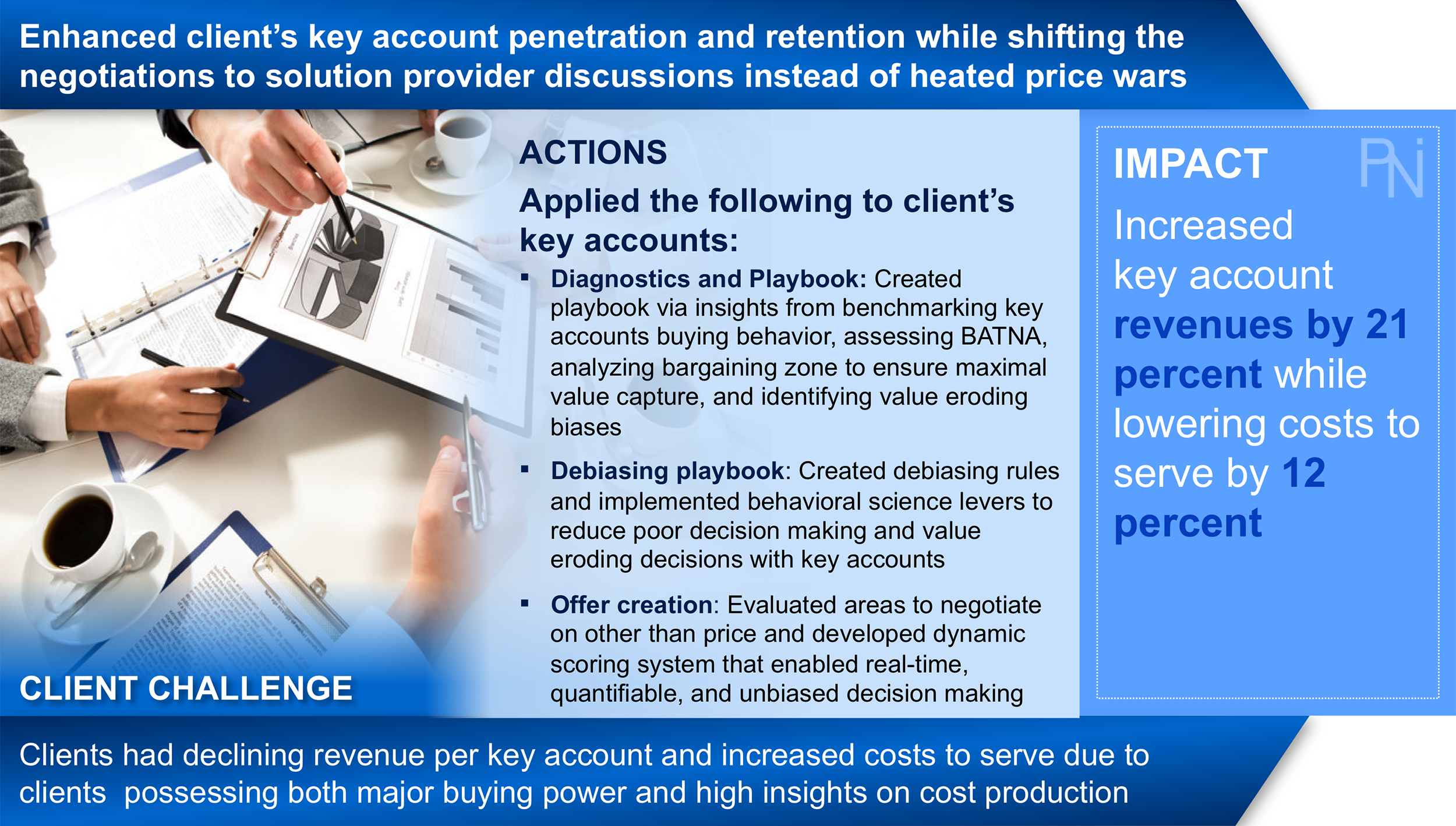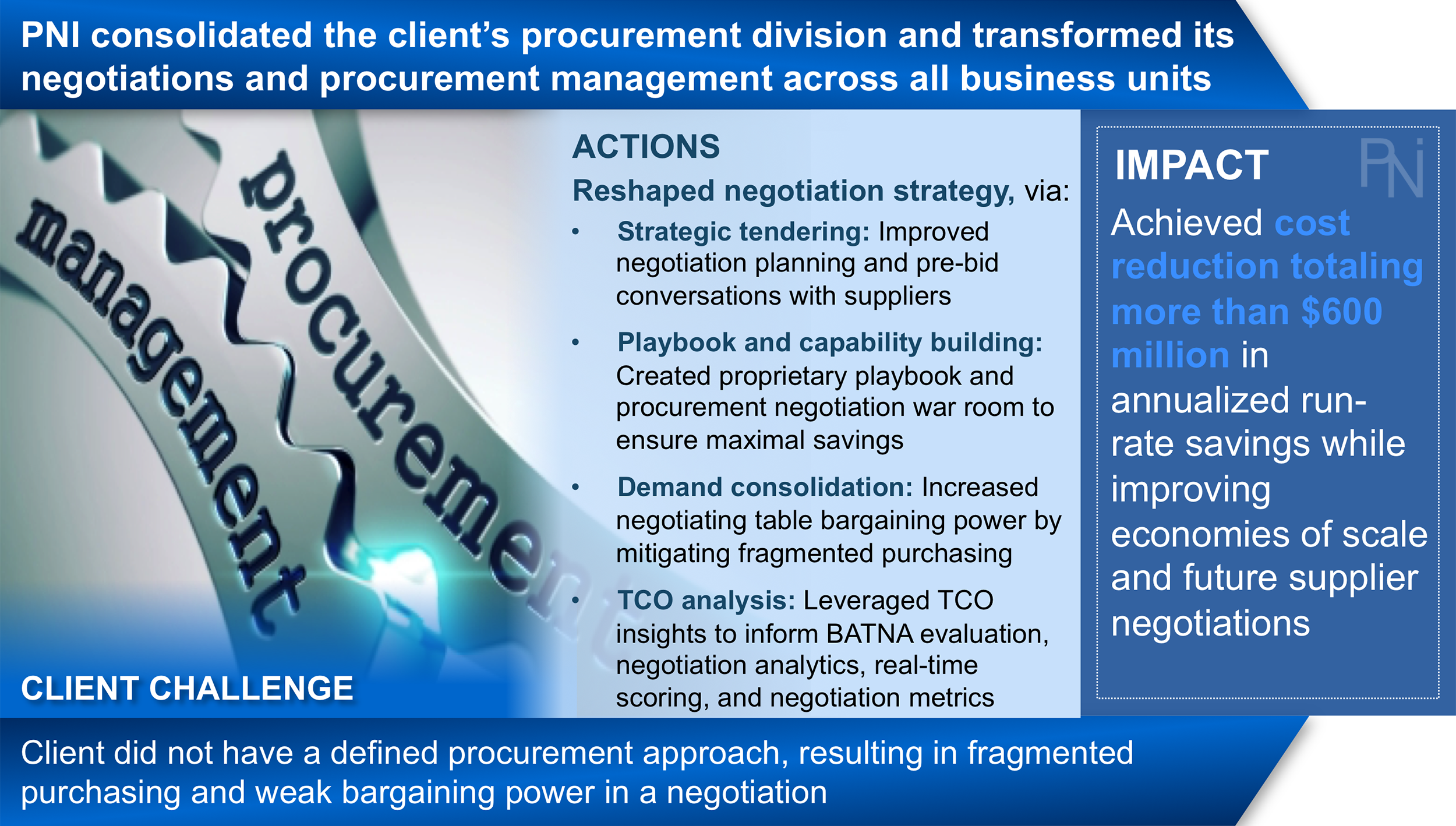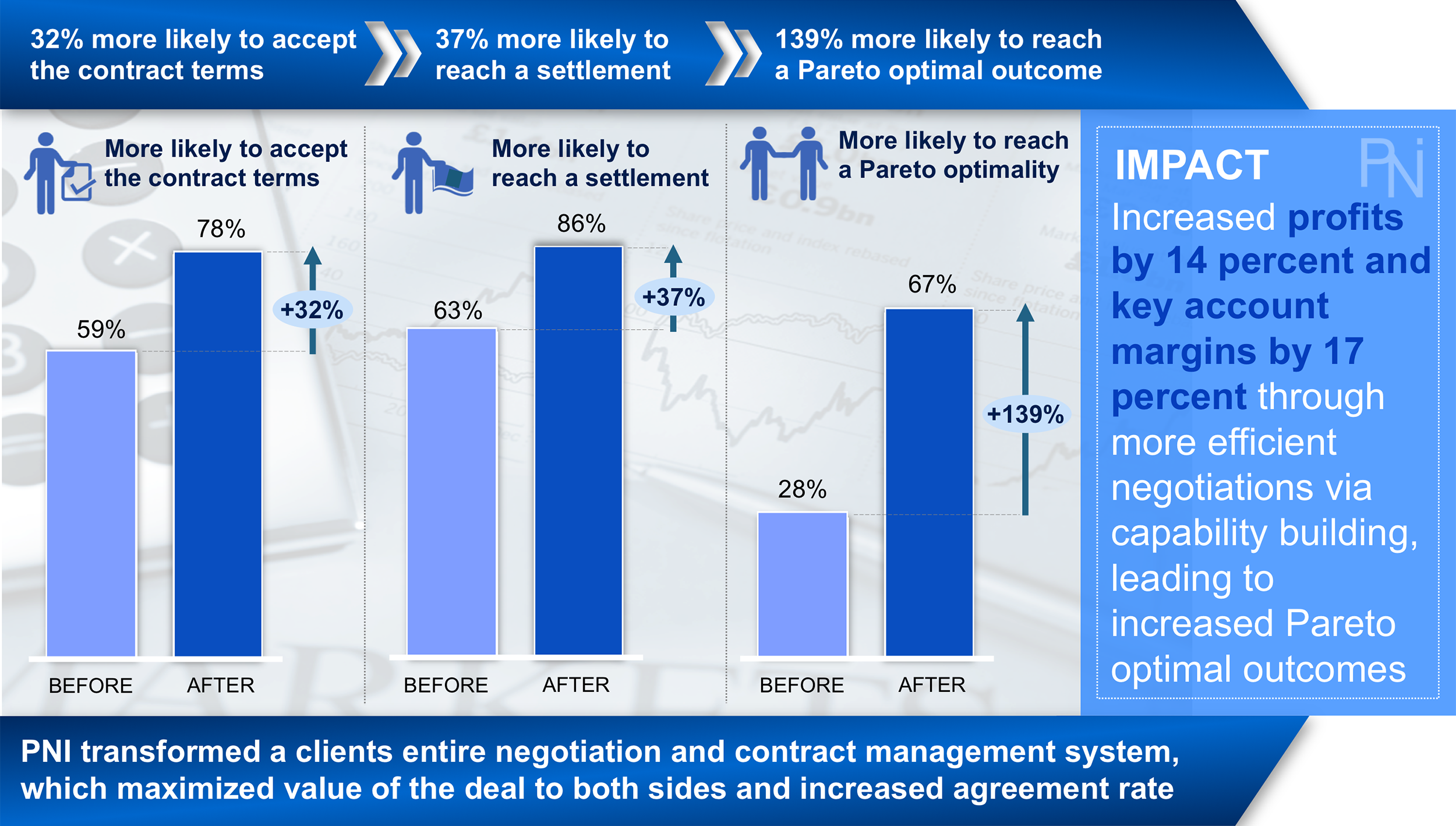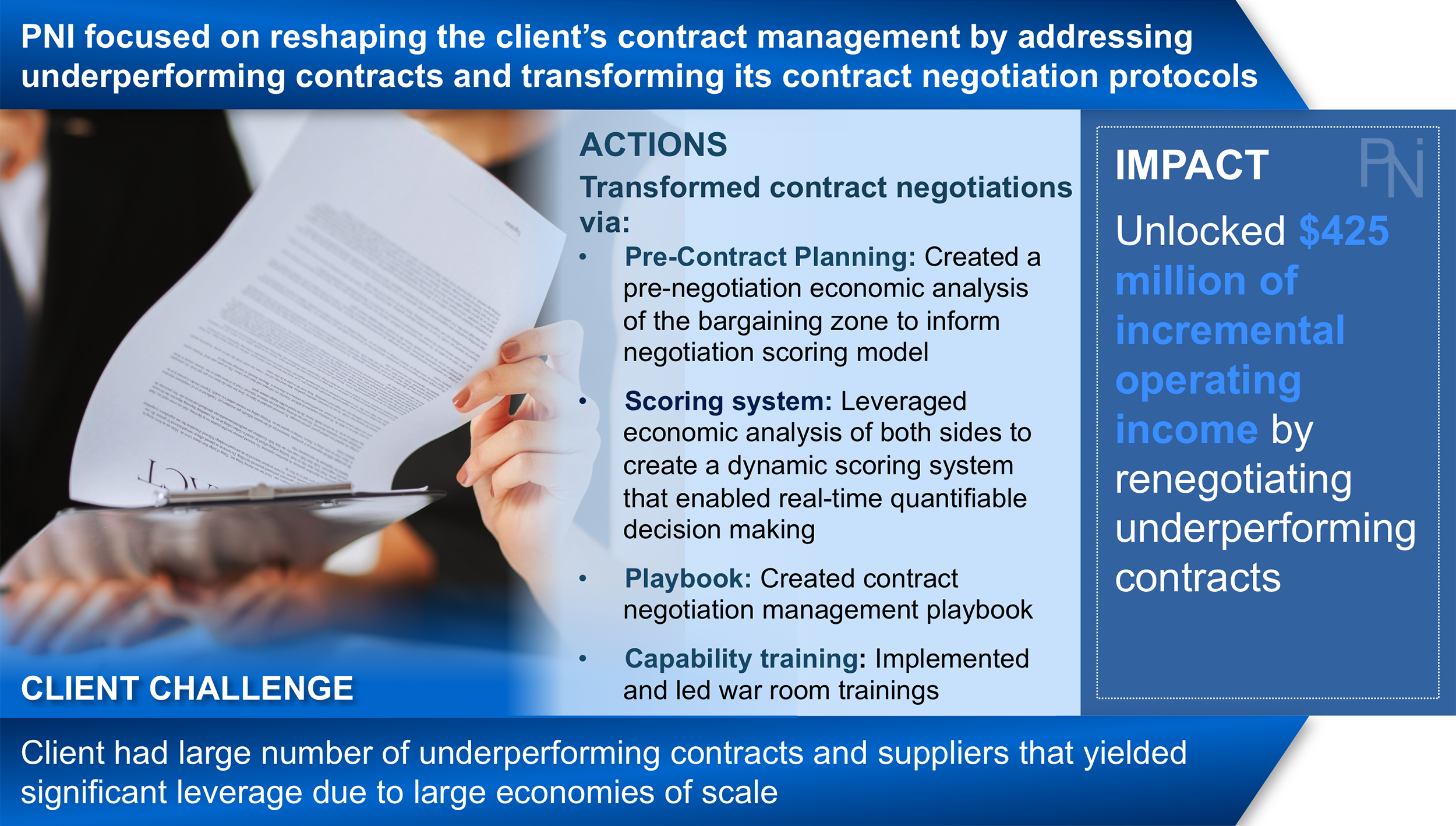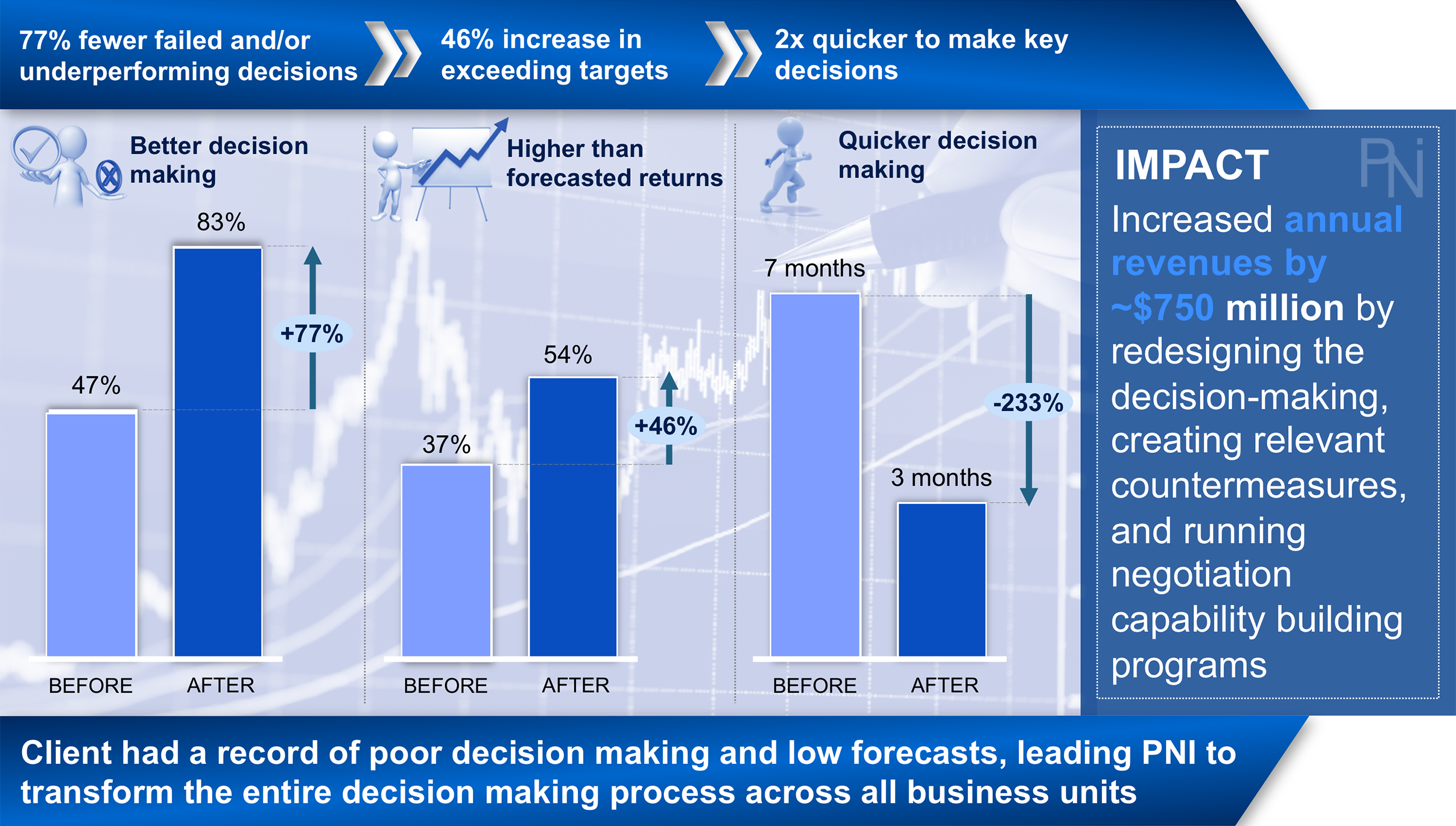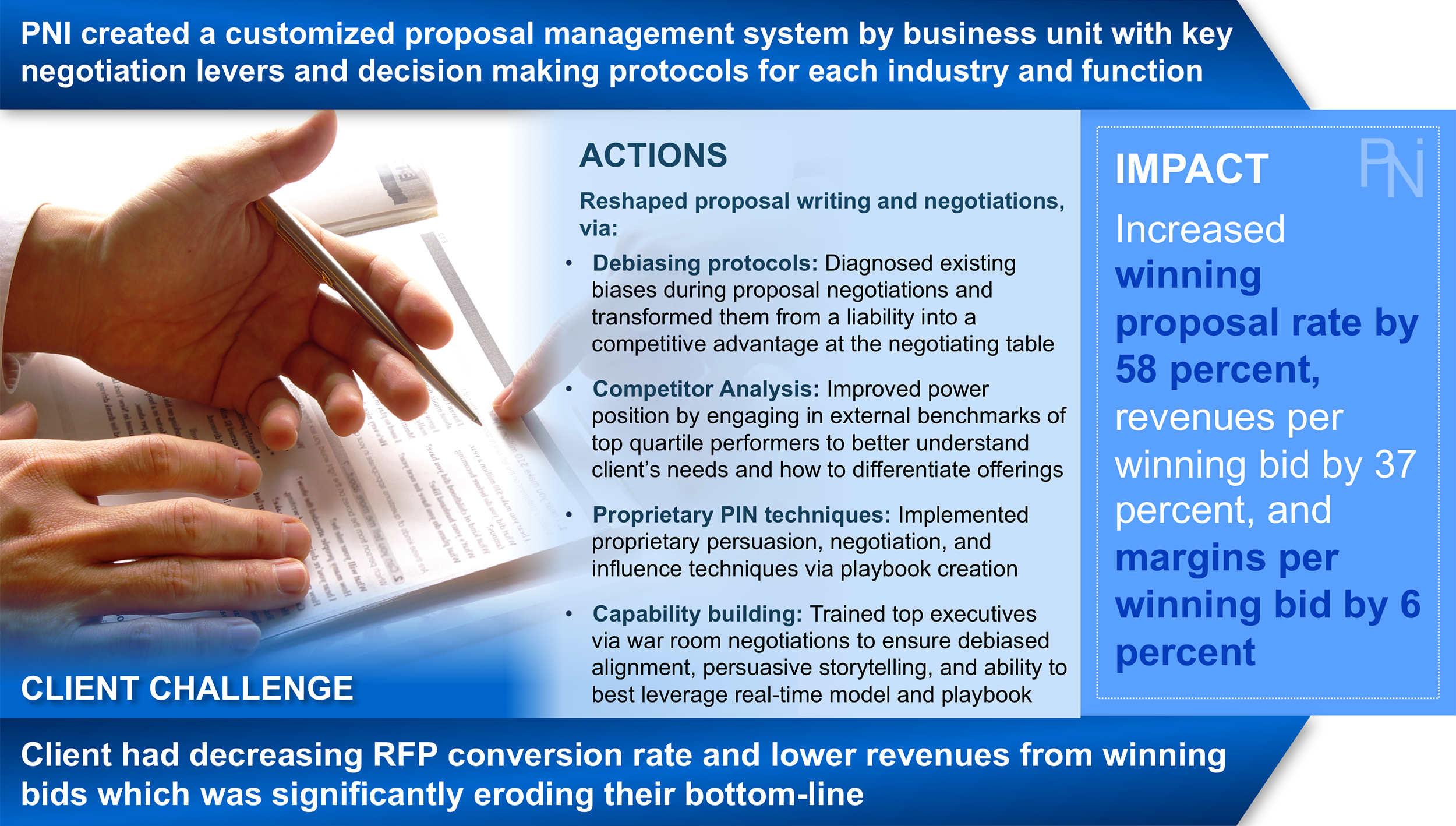Inside-Out & Bottoms-Up: The Gateway to Organizational Health
Author: Joshua Seedman
Executive Summary
INSIDE-OUT MODEL
Exhibit 1 (Click to Enlarge)
BOTTOMS-UP MODEL
Exhibit 2 (Click to Enlarge)
INSIDE-OUT | BOTTOMS-UP™
Most of the areas holding back a company’s growth stem from internal obstacles rather than external market or competitive forces. Indeed, a recent survey by McKinsey & Company found that internal issues are the number one ranked area for lack of enterprise effectiveness. In addition, Bain & Company found that 85% of the root causes for failure to maintain profitable growth are now internal to a company. The proposed “inside-out | bottoms-up” model advocates that an internal focus coupled with an employee first mindset serves as a gateway to product innovation, service excellence, and ultimately sustainable growth (See Exhibits 1 and 2). Quite simply, this model advocates that priority number one is internal health (i.e., inside-out). Concurrently, this inside-out mindset is coupled with a bottoms-up mentality where every employee - no matter where in the corporate hierarchy - is transitioned from an “employee” mindset to a true “ownership” mindset. This organizational shift ensures that autonomy, empowerment, and a bias for action permeates from the bottom-up. When leveraged together, this "inside-out | bottoms-up" model ensures internal health is not the area holding back growth but rather the key driver that's propelling sustainable growth.
INTRODUCTION
“Most of the areas holding back growth don’t stem from external market or competitive forces but rather from internal obstacles.”
To ensure internal issues are not the underlying problem for stagnant growth any organization must have (1) high employee engagement stemming from strong organizational health and (2) a focused strategy that ensures enterprise alignment and prioritization (See Exhibits 1 and 2). Firstly, organizational health should include high employee engagement, an empowerment mindset, bias for action, autonomy, company wide cross-functional collaboration, aligned purpose, and quick decision-making that is not hoarded by upper management but rather pushed down to the frontline. Secondly, a world-class strategy should be focused, actionable, and simple, allowing the leaders to align the entire organization to its aspirational goals and purpose.
While easy sounding in principle few companies get one let alone both of these two elements right. For example, far too often culture, such as employee engagement, takes a back seat to a company’s product or brand. In addition, business units often function in silos with lack of focus from the top meaning each employee and business unit are going off in different directions to work on their own desired goals. This creates significant energy and financial leakage and is the destroyer of growth. Thus, with companies often acting as their own worst enemy this article focuses on a new way to think about unlocking growth, specifically an "inside-out | bottoms-up" approach.
Inside-Out | Bottoms-Up Model
INSIDE-OUT MODEL
Exhibit 3 (Click to Enlarge)
BOTTOMS-UP MODEL
Exhibit 4 (Click to Enlarge)
“A domino effect of either growth or value destruction begins internally with employees. People are a company’s greatest asset – more than its brand, products, or customers. Thus, if an enterprise gets the employee element right a great brand, product, and customer base will occur practically automatically.”
This article advocates that an employee first mindset serves as a gateway to product innovation, service excellence, and ultimately sustainable growth. This can be achieved via an "inside-out | bottoms-up" model. Regarding the “inside-out” element, a company must look internally at creating a culture that creates raving employee advocates before it can expect to create raving customer advocates or innovative products. In addition, the “bottoms-up” element indicates a renewed focus on the frontline as the heart, soul, and pulse keepers of the organization takes place at this stage. For example, typically, the least paid staff are the ones that have the most touch points with the customer. However, these very employees are traditionally the least empowered because a tops-down instead of bottoms-up approach is taken. This equates to significant value destruction which stems from both employee and customer pain points.
“Choice is the fuel for an engaged employee, engagement is the fuel for learning, learning is the fuel for innovation, and innovation is the fuel for both distinctive products and world-class customer experience.”
The premise for this inside-out | bottoms-up model rests on the following: while excessive rules may work for compliance, choice is a far better option for bringing the best out of a company and its employees. Simply, choice is the fuel for an ownership mindset/engaged employee, ownership/engagement is the fuel for learning, learning is the fuel for innovation, innovation is the fuel for both distinctive products and world-class customer experience, and distinctive products and customer experience is the fuel for profitable growth. For example, Google allows its engineers to spend 20% of their time working on anything they like. Google understands the power of employee autonomy, empowerment, and choice. Consequently, in a given year, typically 50% of Google’s new products are created from this 20%, including Gmail, Orkut, and Google News.
EMPLOYEE INVESTMENT ROI
Exhibit 5 (Click to Enlarge)
EMPLOYEE ENGAGEMENT VALUE CREATION
Exhibit 6 (Click to Enlarge)
Without an employee first mindset a domino of value destructive undercurrents start overtaking an organization, including (1) poor employee engagement, (2) high employee turnover, (3) low employee productivity, (4) stifled creativity and poor innovation, (5) poor customer service, (6) low customer loyalty, (7) slow decision-making, (8) internal competition stemming from silos, and (9) stagnant profitable growth. Improving employee engagement is highly correlated to improving customer experience and profitable growth. In its most striking form each dollar invested in improving employee engagement can reap up to a 4X ROI in customer engagement leading to significant revenue increases (See Exhibit 5). In addition, and according to Gallup, highly engaged organizations have double the rate of success of lower engaged organizations and enjoy significant improvements in profitable growth. On the flip side of this, and according to another Gallup study, almost 70% of employees are either destroying or not creating any value day in and day out (See Exhibit 6). Simply, only 30% of employees are engaged in their work. The underlying issue begins with leadership, which snowballs downward into siloed groups that lack empowerment, resources, and focused alignment regarding the purpose and goal of the company. With an up to 4X ROI, improving employee engagement is a simple investment decision.
“Each dollar invested in improving employee engagement can reap up to a 4X ROI. With only 30% of employees engaged in their work it’s a simple investment decision.”
As illustrated, most companies unfortunately neglect organizational health or think of it as an afterthought because an outside-in | top-down mentality permeates instead of an inside-out | bottom-up approach. In all actuality, organizational health and its accompanying employee engagement should be the first priority because the domino effect of either growth or value destruction begins internally with one's employees. Remember, people are a company's greatest asset – more than its brand, products, or customers. If an organization gets the employee element right a great brand, product, and customer base will occur almost automatically.
Conclusion
“Matrix driven, hierarchical bureaucracies unknowingly create a silo-driven enterprise that is an imitator instead of an innovator and a complacent, slow decision-maker instead of a challenger of the status quo.”
To recap, most stagnant growth occurs not from external forces but rather from internal issues, specifically around organizational health, employee engagement, and culture. This challenge stems from matrix driven, hierarchical bureaucracies that incentivize individual instead of team efforts. In turn, this landscape unknowingly fosters complexity instead of simplicity and chaos instead of focus. Such an atmosphere consequently creates a silo-driven enterprise that is an imitator instead of an innovator and a complacent, slow decision-maker instead of a challenger of the status quo, equating to significant energy leakage and ultimately major value destruction. To avoid this erosive, top-down undercurrent, an internal transformation must be a key priority for any organization.
“If a company wants an enthusiastic market outlook, it must first create an inspired culture. Concurrently, if a company wants successful leaders, it must first create successful employees from the bottom-up.”
Simply, if a company wants an enthusiastic market outlook, it must first prioritize organizational health and create an inspired culture. Concurrently, if a company wants successful leaders, it must first create successful employees from the bottom-up. Thus, the first step to profitable growth and raving customers is to create a culture of raving employees. Then and only then will employees be inspired and engaged to create those “wow” moments for customers because a company first created those "wow" moments for its employees. The proposed "inside-out | bottoms-up" model will help any organization on this journey, by bringing back engagement, choice, empowerment, an ownership mindset, and focused alignment to the entire enterprise.
About the Author
Joshua Seedman is the founder and chairman of PNI Consulting, a management consulting firm that specializes in global transformations. He has over 20 years of operating and general management experience with expertise in organizational transformations, customer experience, employee engagement, digital transformations, sales & marketing, operational turnarounds, culture/change management, and high-stakes negotiations. His experience includes executive roles within F500 companies, top-tier consulting leadership (McKinsey & Company), over 10 years of global P&L responsibility, and corporate lawyer (Davis Polk & Wardwell). He received his MBA from Kellogg School of Management and his J.D. (cum laude) from Northwestern University School of Law.








